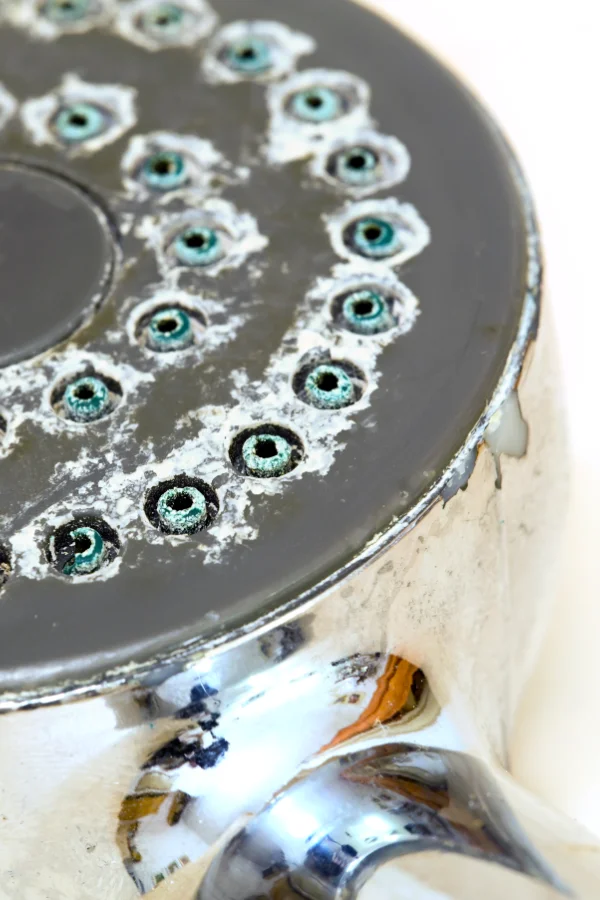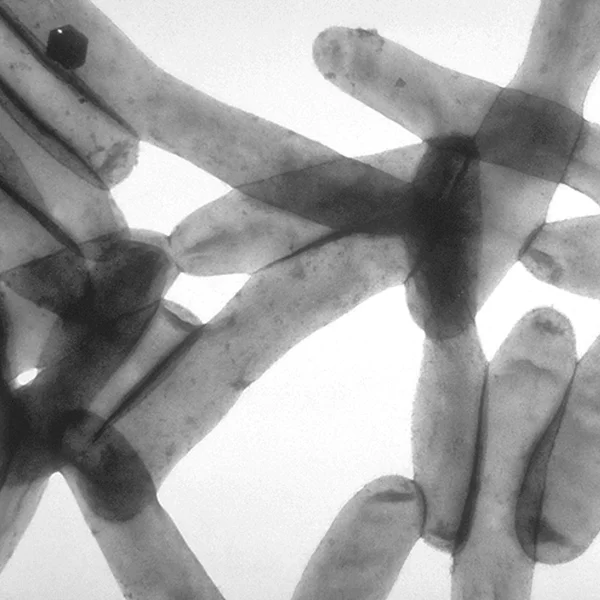In this post, we focus on how we can gain better control over bacterial content in water from the very beginning, in order to reduce the use of aggressive and environmentally harmful chemicals for bacteria removal.
Chlorine dioxide continues to be the most commonly used biocide for eliminating bacteria in water, including Legionella. Its ability to destroy biofilms is a highly important aspect of this chemical. However, chlorine dioxide serves solely for control and reduction, not prevention.
The key to this issue lies in understanding the connection between calcium deposits, biofilms, and Legionella. This approach allows for a reduction in the number of bacteria in your water system, subsequently minimizing the time and chemical consumption for system maintenance.
And this is where the ecoturbino shower adapter comes into play, ensuring hygienic showers in hotels, fitness centers, at home, retirement homes, hospitals, etc.

A biofilm consists of living microorganisms, such as bacteria, that settle and multiply in a colony or community.
The formation of a biofilm occurs when certain microorganisms, like some species of bacteria, adhere to the surface of an object in a moist environment and begin to proliferate.
These microorganisms attach themselves to the object’s surface by secreting a sticky, slimy substance.
Legionella are bacteria that can cause Legionnaires’ disease, a severe and potentially life-threatening form of pneumonia.
Transmission of Legionnaires’ disease to humans occurs through the inhalation of tiny water droplets (aerosols) that are suspended in the air and contain Legionella bacteria. Infection occurs when these water droplets enter the lungs.
Legionella pneumophila was the first of a large and growing group of related bacterial species, known as Legionellae, to be discovered. Today, there are known to be 48 species and 70 subgroups.
There are varying reports regarding the prevalence of Legionella, but they are generally more commonly found in hot water systems. However, it is believed that the frequency of Legionella in hot water systems has decreased in recent years.
The number is expected to continue decreasing as awareness of the problem grows and more plumbing measures are taken. This means that the measures taken have proven to be effective in minimizing the presence of bacteria in water, and neglecting them is considered negligence.
The optimal living conditions for Legionella are:
Effects of different temperature ranges on the proliferation of Legionella:
| Temperature range | Effect on the reproduction rate |
| until 20 °C | very slow reproduction |
| from 20 °C | Reproduction rate increases |
| 30 °C bis 45 °C | Optimum multiplication, doubling at 36 °C in only about 3 hours with a good supply of nutrients, 22 – 72 hours with a low supply of nutrients. |
| from 50 °C | hardly any reproduction |
| from 55 °C | No more reproduction possible, killed after 6 hours |
| from 60 °C | Destroys legionella within approx. 30 minutes |
| from 65 °C | Killed within 2 minutes |
| from 70 °C | Killed within seconds |
In places where limescale deposits have formed due to the precipitation of minerals in hard water and their attachment to surfaces, an optimal breeding ground for bacteria is created.
The main factors that particularly favor the growth of Legionella are temperature and the availability of nutrients. Legionella thrive best at temperatures between 20 and 45°C, and when the water remains stagnant in this temperature range, the bacteria can multiply rapidly.
In conjunction with the mineral-rich nature of the new habitat for the bacteria, namely the limescale, which serves as an excellent source of nutrition, the problem can further spread.
Once the bacteria are present and multiplying, they form a biofilm. In the presence of limescale and biofilm, which are now in an environment that provides them with ideal conditions and sufficient nutrition, Legionella and other bacteria can multiply and thrive.

When you visit any web site, it may store or retrieve information on your browser, mostly in the form of cookies. Control your personal Cookie Services here.